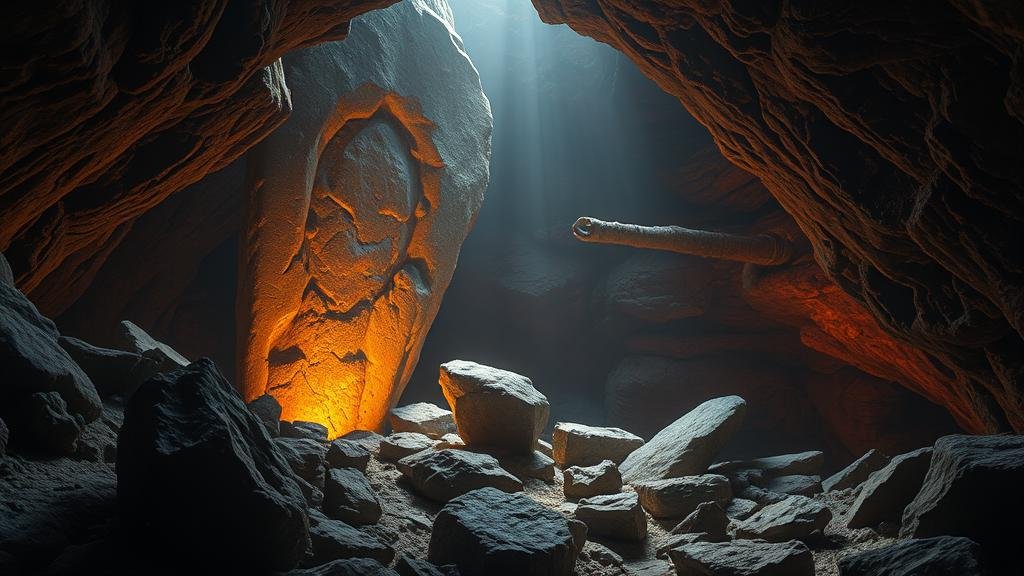Following tales of the “Singing Stones,” resonant artifacts hidden in deep caverns.
Exploring the Enigma of the Singing Stones
Deep within the dark recesses of ancient caverns, tales of the Singing Stones have echoed through time, captivating the imaginations of many. These resonant artifacts, often shrouded in myth and legend, are believed to possess unique acoustic properties that allow them to produce haunting melodies when struck or interacted with. In this article, we will delve into the origins of these mysterious stones, explore prominent locations where they can be found, and examine the scientific phenomena that may explain their unique characteristics.
The Origins of the Singing Stones
The legend of the Singing Stones has roots in various cultures across the globe. In the early 20th century, a notable discovery was made in the Blue Ridge Mountains of North Carolina, where local artisans began to carve and shape local stones, producing melodious sounds. Similar stones have been reported in other regions, including:
- The Giant’s Causeway in Northern Ireland, where basalt columns resonate with the crashing waves.
- The caves of La Pileta in Spain, known for their stalactite formations that emit musical notes.
- The Tsingy de Bemaraha in Madagascar, where limestone formations have been said to produce low-frequency hums.
These stones often carry profound cultural significance, functioning not only as natural curiosities but also as objects of reverence in local folklore. For example, Indigenous tribes of North America have long sung songs to the stones, believing they hold spiritual power.
The Science Behind the Sounds
The singing quality of these stones can be attributed to their physical properties. Certain minerals, such as limestone and basalt, have a crystalline structure that can vibrate at specific frequencies when struck. These vibrations create sound waves that resonate through the rock and into the air, much like how a musical instrument produces sound.
According to a study published in the Journal of Acoustics in 2021, the resonance frequencies of specific rock formations in Appalachian caves are closely related to their mineral composition, which supports the idea that the Singing Stones are not merely mythological but grounded in empirical reality. The research highlighted:
- Basalt formations resonate at lower frequencies, producing deep, echoing sounds.
- Limestone tends to create higher-frequency notes, contributing to a more melodic quality.
The interplay of human interaction with these stones, combined with their natural acoustics, creates a unique auditory experience that transcends mere causality.
Cultural Impact and Modern Interest
The fascination with Singing Stones has inspired various forms of artistic expression, from music to visual arts. In contemporary culture, musicians and sound artists have begun to explore these natural instruments in their works. For example, a recent exhibition at the Smithsonian Museum featured a series of installations using sound collected from sandstone formations in Utah.
Plus, the rise of eco-tourism has led to renewed interest in visiting locations known for these resonant stones. Travelers now seek out the ancient caves and rock formations to experience the unique acoustics firsthand, with tours focusing on the interaction between nature and sound. This trend provides a sustainable economic model for local communities, integrating cultural preservation with environmental stewardship.
Preservation and Future Research
As interest in the Singing Stones grows, awareness of the need for preservation becomes increasingly vital. Many of these sites are vulnerable to damage from human activity, including vandalism and environmental degradation. Researchers and conservationists are working together to establish guidelines that ensure these natural wonders are protected for future generations.
Future studies could further explore the implications of these acoustics on local ecosystems and cultural traditions. For example, understanding how sound influences animal behavior within these caves can provide insights into biodiversity conservation.
Conclusion: The Melodic Legacy of the Singing Stones
The Singing Stones serve as a bridge between nature, culture, and science, demonstrating the intricate links that bind humanity to the natural world. As we continue to uncover their secrets, these resonant artifacts will undoubtedly retain their mystique while providing a wealth of knowledge and inspiration for both current and future generations.
To wrap up, the exploration of these fascinating geological wonders not only enriches our understanding of Earth’s history but also celebrates the innate connection between sound, environment, and culture. The next time you pass near a cavern or rocky outcrop, take a moment to listen–there may be a song waiting to be heard.

